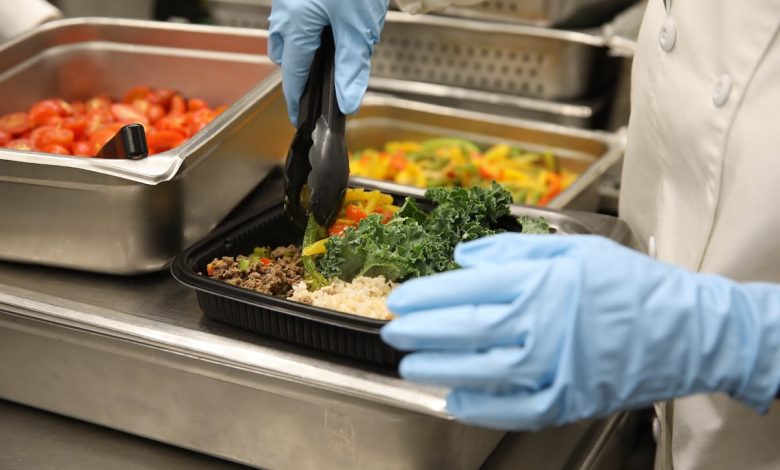Why the Army’s food service modernization must go beyond imitation

Imagine stepping out of your barracks and finding multiple food options within walking distance: a dining hall with several micro-restaurant concepts, a grab-and-go market for essentials or even a coffee shop. That’s what real campus-style dining looks like.
Right now, the Army is trying to replicate that model. Several modernization initiatives are underway, fighting through layers of bureaucracy, outdated policy and institutional inertia. The goal? To improve the soldier dining experience and increase meal card entitlement usage. But even with those efforts, one must ask: Is the university dining model truly generalizable to the military setting?
RELATED
Before my time as an Army dietitian, I worked in university dining at Ohio University. Even in the early 2000s, the student dining environment far outpaced what the Army offers today. Students could flexibly use meal swipes across dining halls, grab-and-go concepts and campus markets. Didn’t want to sit and eat? No problem, grab your food and go. Miss a few meals during the week? Use your meal swipe as a cash equivalent, a set dollar amount per meal, at a campus market (think an Army & Air Force Exchange Service shoppette, minus the alcohol). Some schools even allowed local restaurants to accept those dollars.
Now contrast that with the Army’s use-it-or-lose-it meal card system, where garrison dining access often resembles a food desert. Since 2022, Army Materiel Command (AMC) has been pushing modernization efforts. Pilots like the Flexible Eating and Expanded Dining (FEED) initiative aim to expand essential station messing (ESM) redemption sites, while the Campus-Style Dining Venue (CSDV) initiative seeks to contract out base dining facilities to create more appealing dining experiences.
These efforts signal progress. But they won’t be enough.
This isn’t just a question of imitation. It’s a question of environmental differences.
Class schedules are flexible. Army training schedules are not. College students decide when, or if, they go to class. Soldiers don’t choose whether to report to formation, motor pool or PT.
For universities, dining is part of the amenities package. Whether a student eats junk food or skips meals altogether isn’t the university’s concern. But in the Army, nutrition is operational and fuels the warrior ethos. It shapes physical readiness, recovery, injury risk and long-term health. What’s on the plate today determines combat capability tomorrow.
And in a world of formations, hard times and competing priorities, food choice is one of the last liberties soldiers hold. But when the Army fails to meet their needs, they’ll use that liberty to eat elsewhere. Or not at all.
- Whole-food access: Expand access points for fresh produce, lean proteins and minimally processed foods, ideally near barracks and family housing. Think micro-markets stocked with nutritious staple items, not just chips, candy and energy drinks.
- ESM at the commissary: Numerous exceptions to policy have been made in other food modernization pilots. One more is needed: Allow cash equivalents to be used at the commissary, not just for prepared foods, but for raw ingredients as well. This would boost ESM utilization and expand access to nutrient-dense, performance-supportive options.
- Hub-and-spoke food models: Centralize food production to improve labor efficiency and product quality, and distribute meals to where soldiers live and work, accounting for soldier geographic sprawl and transportation barriers.
- Market-style options: University dining continues to evolve. At Ohio University, a campus dining venue was renovated to include a market offering fresh, minimally processed food options and a teaching kitchen. The Army should take note.
- Utilize untapped labor pools: Self-op university dining often relies on student labor. The Army can do the same with underemployed military spouses and family members, offering them training, income and purpose while building community resilience.
Modernizing Army food service isn’t just about mirroring college campuses. It’s about building a nutrition infrastructure that holistically supports soldier health, readiness and retention. That requires more than trendy venues or digital kiosks.
It demands bold policy, operational alignment and a clear-eyed recognition that nutrition isn’t a perk. It’s part of the warfighting function.
Jordan DeMay is an Army officer specializing in nutrition, human performance, and military health care delivery. He previously served as the nutrition lead for the Army’s Holistic Health and Fitness (H2F) System, a health care administration fellow at Defense Health Agency headquarters and the officer-in-charge of two military treatment facility dining facilities. He holds master’s degrees in nutrition, health care administration and business administration from Baylor University. He is board-certified in sports dietetics and is also a certified strength and conditioning specialist.
The views and opinions expressed in this article are solely those of the author and do not reflect the official position of the United States Army or the Department of Defense.







